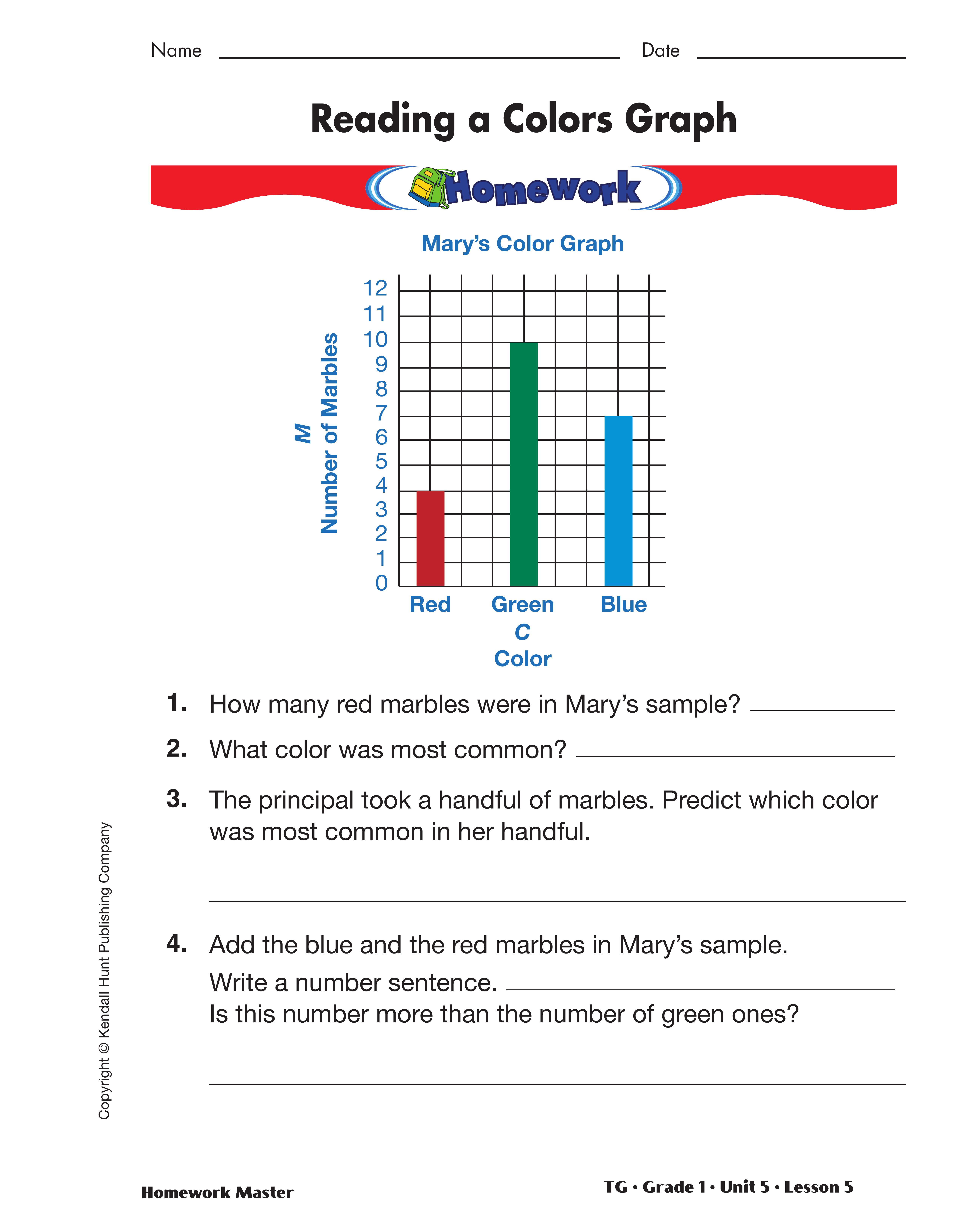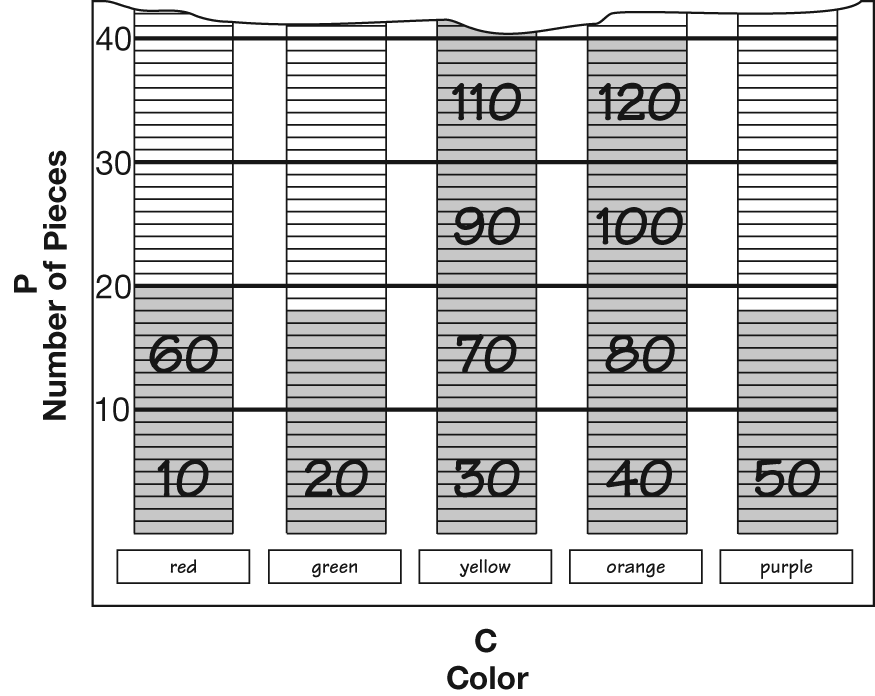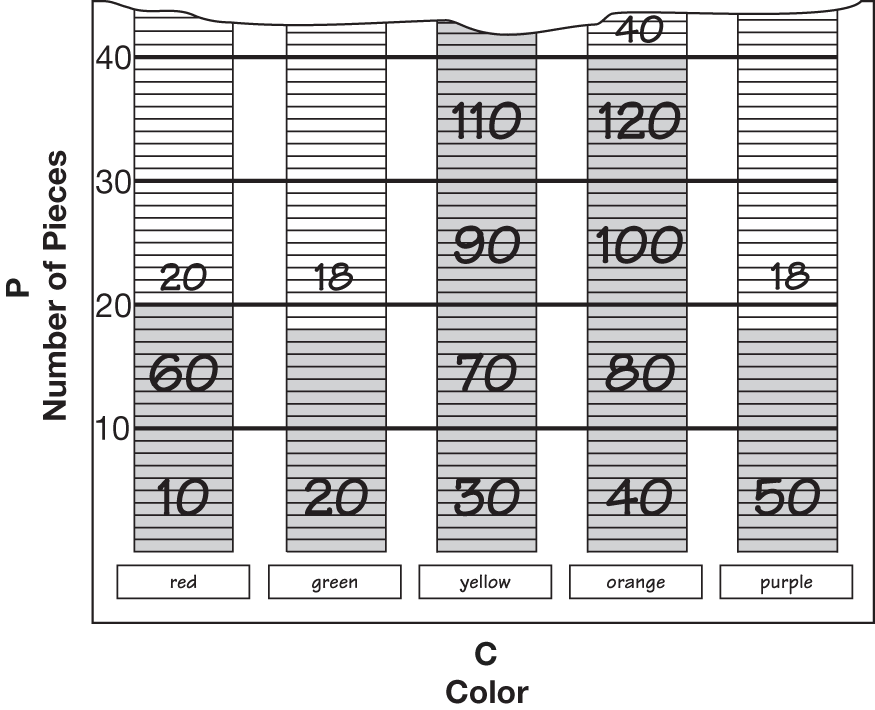Use the Sample Dialog to lead a discussion analyzing and
making predictions from the data represented in a graph or
data table.
Teacher: If I wanted to make a prediction about what color
would be most common in all the boxes of this cereal at
the store, do you think it would be better to look at one
of our little samples or at the big sample of our whole
class?
Romesh: I think mine because I know it’s right.
Teacher: Does your sample look the same as your neighbor’s
sample?
Romesh: No.
Teacher: So, if everyone’s sample is not the same how do
we know whose sample is right?
Romesh: I guess we don’t know.
Ming: I think the big one.
Teacher: Why do you think it would be better to look at the
bigger sample?
Ming: There’s more there so we know more.
Teacher: How does knowing more help?
Jerome: Knowing more helps us see more and that helps us.
Teacher: Does it help us to make a better prediction?
Jerome: Looking at my sample the most common is red.
Looking at the class data, green is the most common. My
sample is not right.
Teacher: Here's another question. What would you say if I
told you that I reached into the cereal box and I got five
brown pieces?
Tanya: You can't. There aren't any brown.
Teacher: Why do you say that?
Tanya: Because I looked. There's no brown.
Teacher: Tanya's right. If there aren't any brown pieces,
then I can't pull out a brown. We say that this is impossible.
What if I said that I'd give Grace a nickel if she
could pick out a red, blue, green, yellow, or orange
[name all the available colors] piece without looking
into the box. She can pick out any one of those colors
and still get the nickel. Is Grace going to get her nickel?
Jacob: What if she picked a brown one? Would she get a
nickel?
Grace: No. There's not any brown ones. How could I pick a
brown one?
Teacher: Grace is right, Jacob. Remember, we just said
there are no brown ones and so we say it is impossible
to pick brown. But what happens if she picks a [list all
the available colors]?
Grace: I think I get a nickel because what else could I pick?
Teacher: That's right, Grace. We say that it is certain that
you will pick one of those colors because that's all the
colors we have.

















